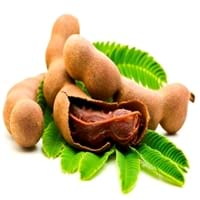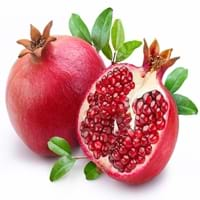Health Benefits
Boosts immune system, Boosts respiratory health, Cancer prevention, Digestive aid, Piles treatment
Cancer prevention, Heart care, Helps in cartilage regeneration, Improves stomach health, Increase in haemoglobin, Increases metabolic rate, Prevents constipation
General Benefits
Beneficial in improving nerve function, Protects against parasites and worms, Relieves pain
Boosts immune system, Controls blood pressure, Controls blood sugar levels, Digestive aid, Maintains healthy cholesterol level
Skin Benefits
Anti-aging benefits, Brightens and lightens complexion, Exfoliates skin, Hydrates skin, Treatment of dark spots
Anti-aging benefits, Skin rejuvenation, Treatment of acne
Hair Benefits
Prevents hair loss
Prevents hair loss, Promotes longer and healthier hair, Treatment of dandruff
Allergy Symptoms
Abdominal pains, Breathing difficulty, Dizziness, Eczema, Fainting, Hives, Itching, Nasal congestion, Swelling of face, Tingling sensation in mouth, Vomiting
Abdominal pains, Anaphylaxis, Itching
Side Effects
Decrease in blood sugar levels, Induces acid reflux, Allergic reaction, Tooth decay, May form gallstones
Allergic reaction, Cold, Breathing difficulty, Irritation, Swelling
Best Time to Eat
Along with meal, As a snack in the late afternoon, Don't consume at night and before bed, Strictly avoid empty stomach
Best if taken as a breakfast (or empty stomach), As a snack in the late afternoon, Eat the fresh ones, avoid mixing with any other foods, don't eat after meal., Morning time (before lunch)
Vitamin B5 (Pantothenic Acid)
Vitamin C (Ascorbic Acid)
Vitamin K (Phyllochinone)
Phytosterol
Not Available
Calories in Fresh Fruit with Peel
Not Available
Not Available
Calories in Fresh Fruit without Peel
Calories in Frozen Form
Not Available
Calories in Canned Form
Not Available
Not Available
Season
Spring, Summer
Autumn
Varieties
PKM 1, Urigam, Hasanur, Tumkur prathisthan, DTS 1 and Yogeshwari
Balegal, Crab, Cloud, Francis, Freshman and Granada
Color
Brown, Reddish-brown
Dark red, Light pink-red
Shape
Curving Cylinder
Round
Taste
Sour-Sweet
Juicy, Sweet
Origin
Africa
India, Iran
Soil Type
Loam, Sandy, Sandy loam, Well-drained
Clay, Sand
Climatic Conditions
Humid to dry, Rainfall, Warm to hot climate
Cold, Dry, Hot
Facts about
- Tamarind is used to prevent body odor.
- African children use the tamarind seeds in games.
- No cases of tamarind toxicity or allergy reported till date.
- Pomegranate means apple with many seeds.
- It was called as the “apple of Grenada” in early English.
- In Hinduism, this fruit symbolizes prosperity and fertility.
- Pomegranate trees can live upto 200 years.
Other Countries
Africa, Australia, Brazil, China, Mexico, Nigeria, Sudan, Taiwan
Africa, India, Middle east, Pakistan
Top Importer
United States of America
Europe
Top Exporter
Thailand
India
Botanical Name
Tamarindus indica
Punica granatum
Synonym
Tamarindo, tamarindus
Punica malus
Subkingdom
Tracheobionta
Tracheobionta
Division
Magnoliophyta
Magnoliophyta
Class
Liliopsida
Magnoliopsida
Family
Fabaceae
Lythraceae
Species
Tamarindus indica
P. granatum
Generic Group
Tamarind Sub
Pomegranate
Difference Between Tamarind and Pomegranate
We might think that Tamarind and Pomegranate are similar with respect to nutritional value and health benefits. But the nutrient content of both fruits is different. Tamarind and Pomegranate Facts such as their taste, shape, color, and size are also distinct. The difference between Tamarind and Pomegranate is explained here.
The amount of calories in 100 gm of fresh Tamarind and Pomegranate with peel is Not Available and Not Available and the amount of calories without peel is 239.00 kcal and 83.00 kcal respectively. Thus, Tamarind and Pomegranate belong to High Calorie Fruits and High Calorie Fruits category.These fruits might or might not differ with respect to their scientific classification. The order of Tamarind and Pomegranate is Fabales and Myrtales respectively. Tamarind belongs to Fabaceae family and Pomegranate belongs to Lythraceae family. Tamarind belongs to Tamarindus genus of Tamarindus indica species and Pomegranate belongs to Punica genus of P. granatum species. Beings plants, both fruits belong to Plantae Kingdom.









